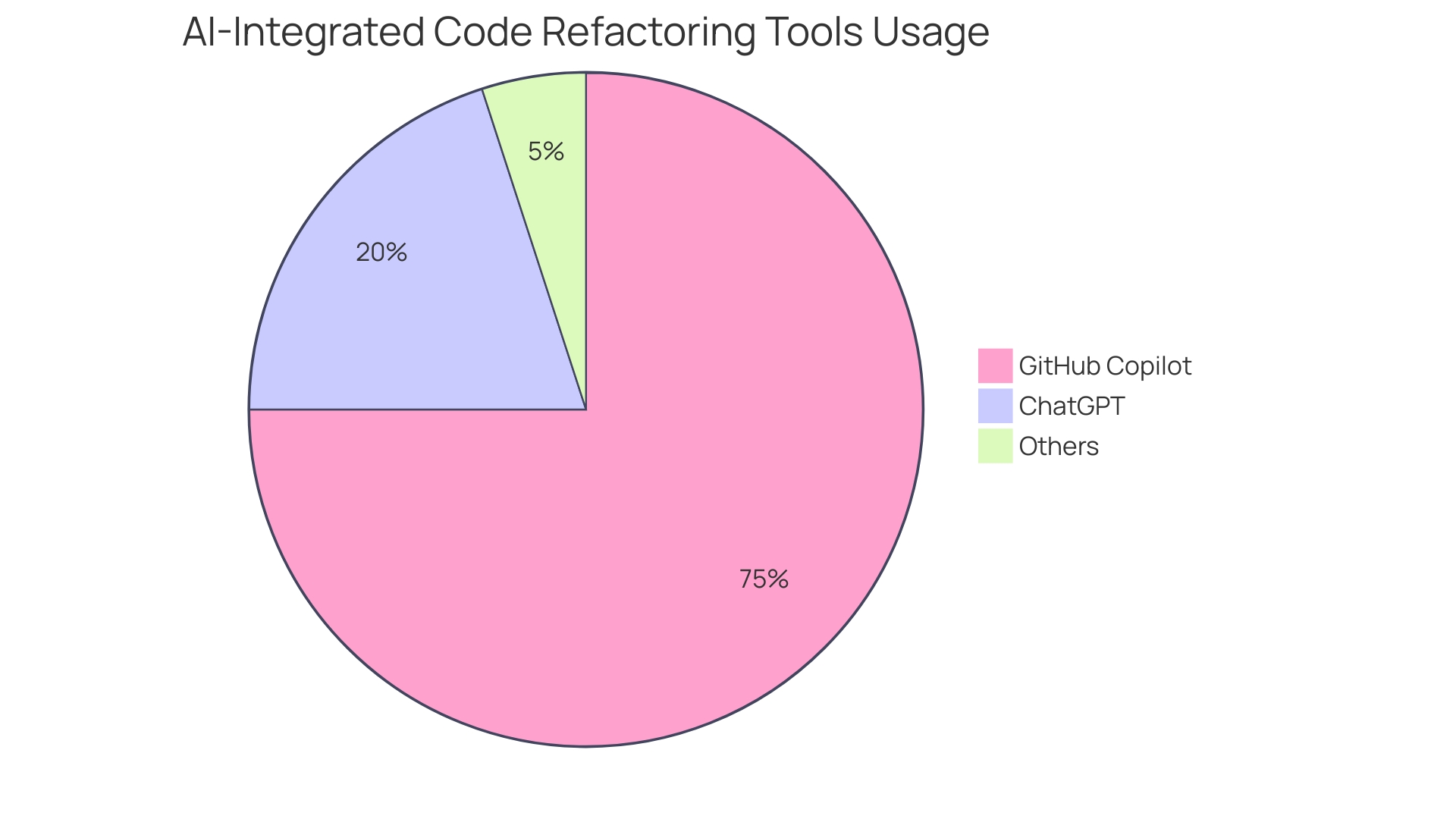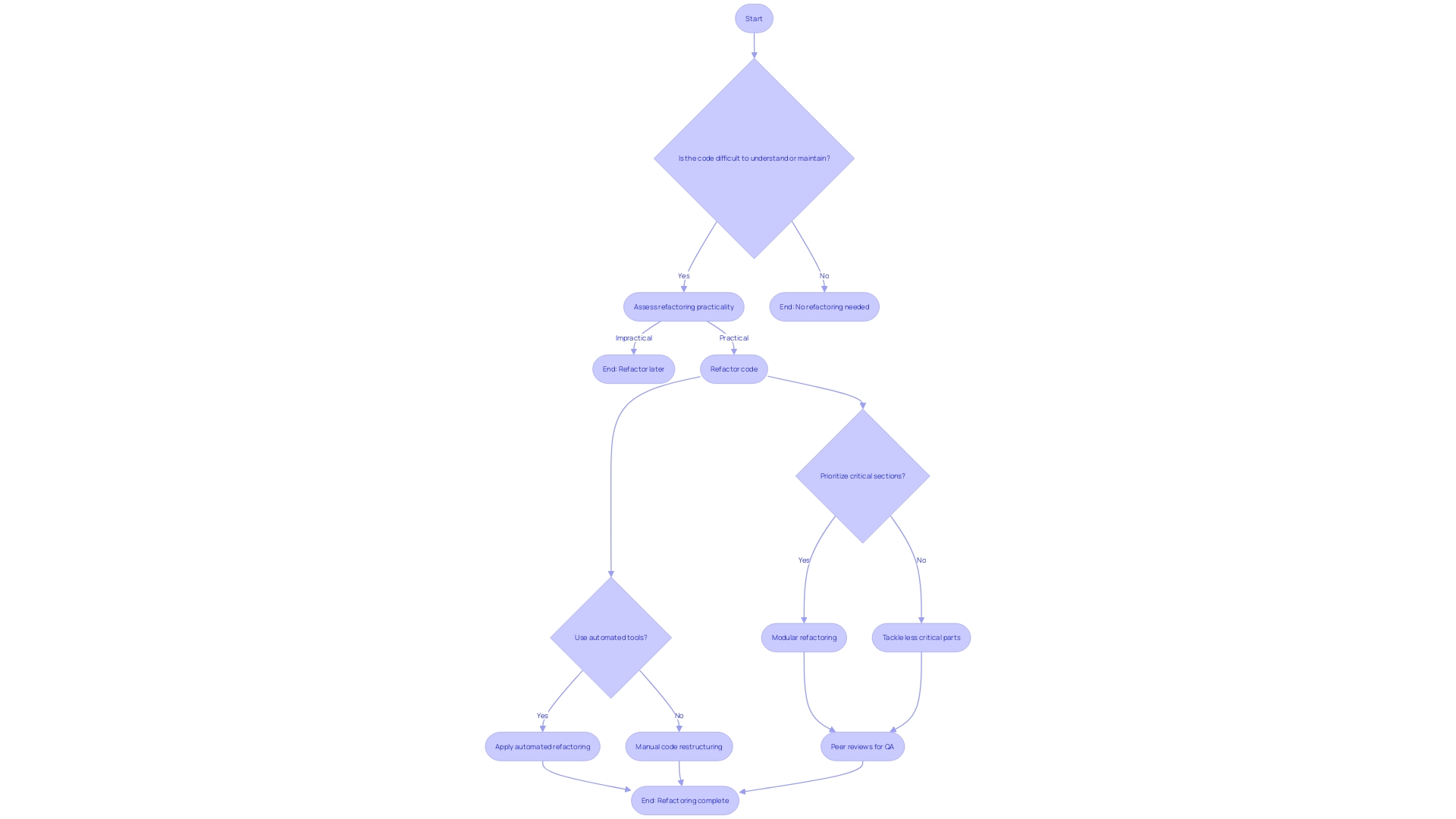Introduction
Software development is a complex process that requires constant adaptation and improvement. One of the key elements in this process is code refactoring, which involves revising and enhancing code without changing its functionality.
By strategically improving code structure, developers can experience numerous benefits such as simplified maintenance, improved performance, and enhanced extensibility. In this article, we will explore the significance of code refactoring, the indicators that signal the need for it, different techniques and best practices, as well as the challenges and considerations involved. Whether you're a seasoned developer or just starting out, understanding the power of code refactoring and how to effectively implement it can greatly increase efficiency and productivity in your software development journey.
Benefits of Code Refactoring
Refactoring is a core element of the software development cycle, aimed at revising and improving code without altering its functional output. Its significance is predominantly recognized in software that has become complex over time, making modifications, comprehension, and maintenance increasingly challenging. By refactoring, developers strategically enhance the code's structure, leading to direct benefits such as simplified maintenance, elevated performance, and heightened extensibility.
Implementing refactoring not only streamlines the developer's work but also prepares the code for future updates and improvements, ensuring a state of continual optimization and relevance. Key indicators that code requires refactoring include rigidity, confusion, and fragility, which hinder progress and adaptability. The employment of tools and methods for refactoring is crucial for achieving a cleaner and more understandable codebase.
Moreover, meaningful naming in coding practices greatly contributes to its readability and maintenance. This approach is critical as the industry is leaning towards an increased dependence on software quality and security, with emerging regulations stressing the necessity for robust code standards amidst escalating cyber threats. These emerging trends underscore the indisputable importance of maintaining high code standards and best practices in a world where software is ever-present in our daily lives.
When to Refactor Code
Recognizing the right moments to refine your codebase is a cornerstone of maintaining a streamlined, top-performing software project. Refactoring, while sometimes ambiguous in its definition, typically represents the process of modifying code to improve its internal workings without altering its external functionality.
This kind of code evolution is critical when faced with the challenges of code that is not easily maintained, understood, or modified. Software developers often encounter situations where the existing code is not quite up to the mark, fails to follow established best practices, or is not in line with design principles.
These moments present an opportunity for refactoring, a practice described as a 'cornerstone' by millions of developers according to GitHub research. The goal is to enhance code readability, maintainability, and potential for future modifications, while also boosting performance and extensibility.
For developers, staying informed on the signs that herald the need for a refactoring intervention is pivotal. Does the code resist modification? Is it turning into a cryptic puzzle when read? These are telltale indicators it's time to refactor. Armed with the right tools and practices, developers can navigate these waters adeptly, ensuring the code remains in prime condition for continuous development and use.
Code Refactoring Techniques
To maintain the integrity of a codebase and enhance its readability, developers can adopt a variety of refactoring techniques. These methods not only streamline the development process, but also ensure that the code remains clean, efficient, and in line with industry standards. One effective strategy is the extraction of methods, which involves breaking down larger functions into smaller, more manageable pieces.
This approach not only clarifies the functionality of each segment but also facilitates easier maintenance and updates in the future. Another essential refactoring practice is the simplification of conditionals. Complex conditional logic can often lead to confusion and errors, but by simplifying these statements, developers can enhance code comprehension and reduce the likelihood of bugs.
Furthermore, the elimination of code duplication is paramount to avoid redundancy and potential inconsistencies. This not only saves time during both the coding and debugging phases, but also results in a more streamlined and coherent codebase. As echoed by seasoned programmers at conferences like PHPCon Poland, adopting such practices not only advances individual skills but also fosters a community of professionals devoted to continuous improvement and excellence in the realm of software development.
Best Practices for Code Refactoring
Enhancing a codebase is crucial not only for current functionality but for its future adaptability as well. Refactoring—the art of improving code without altering its external actions—is an essential discipline in software development.
It's all about cleaning up the inner workings of the code to make it more readable, maintainable, and compatible with future improvements. Refactoring ensures top performance and flexibility, paving the way for code to evolve gracefully as demands shift.
To truly optimize and rejuvenate your code, listen to its weaknesses. Symptoms like complexity that fuels change amplification will tell you it's time for a refactoring session.
Change amplification, as John Ousterhout notes, is when minor tweaks necessitate reconstructive surgery across multiple sections of code—a definite sign your codebase could be more straightforward. Developers have witnessed refactoring morphing into a catch-all word within the trenches of modern software development.
Rather than adding features, refactoring focuses on the code's underlying structure—work that doesn't produce immediate product enhancements but is vital. The trade-off between immediate product growth and long-term code health can stir up debates amongst team members and stakeholders, but balance is key. A best practice for successful refactoring includes testing to ensure functionality remains consistent. Additionally, documenting the changes made during refactoring is invaluable for team collaboration and future maintenance. By embracing a systematic approach to refactoring, development teams can reinforce their code's integrity without detracting from its outward performance.
Tools for Code Refactoring
Modern development environments are increasingly augmented by tools and IDE plugins dedicated to refining and enhancing code. As developers navigate the labyrinth of coding tasks ranging from debugging, such as test case failures and unmet code expectations, to fortifying the codebase with new features or fixes, these automated solutions are becoming indispensable.
For instance, with the proliferation of AI in the tech industry and 77% of developers utilizing ChatGPT, these tools are not merely luxuries but necessities for staying current and competitive. Particularly in the realm of JavaScript, SQL, Python, and HTML/CSS, which remain the most widely used languages, IDE plugins that assist with code refactoring are proving their worth.
These high-tech aids can preemptively alert to potential issues, recommend enhancements, and gauge code quality, thereby streamlining the refinement process for developers. Given that 46% of programmers are also now using GitHub Copilot, the trends are clearly veering towards embracing AI-integrated tools that can shoulder the burden of regular coding activities. Thus, in equipping oneself with these advanced code refactoring tools, developers not only relieve themselves of an immense cognitive load but also catalyze an evolution in software engineering practices.

Challenges and Considerations in Code Refactoring
Code refactoring is an essential process for maintaining code standards and best practices, involving the evolution of a codebase's internal structure without modifying its external functionality. This method is designed to enhance the readability, performance, and maintainability of software.
However, developers must navigate several challenges during the refactoring process. These challenges include assessing the practicality of refactoring efforts within project timelines, the capability of automated tools to assist in code restructuring without introducing bugs, and managing the intricacies of large-scale codebases.
To efficiently address these issues, developers can rely on strategies such as modular refactoring, prioritizing critical code sections, and leveraging peer reviews for quality assurance. Substantial research shows that software maintenance consumes a significant portion of organizational resources, with complexities increasing during the lifecycle management stage.
Specifically, maintenance and enhancements add layers of complexity, emphasizing the importance of refactoring in controlling costs and improving programmer productivity. GitHub's research corroborates this focus on refinement, underscoring Ai's impact on elevating development standards. As the industry moves away from the misconception that software development cannot be effectively measured, embracing refactoring as a fundamental practice has emerged as an imperative for modern software teams. A conviction that has permeated the development community is expressed in the reflection that although refactoring might occasionally be dismissed by project managers as having minimal value, it remains an integral part of progressive development. It endows software with the flexibility to adapt to future needs, ultimately safeguarding the codebase's health and sustaining its effectiveness in an ever-evolving technological environment.

Conclusion
In conclusion, code refactoring is crucial in software development for simplified maintenance, improved performance, and enhanced extensibility. By recognizing indicators and using various techniques, developers can streamline the development process and align with industry standards. Adopting best practices and utilizing tools and plugins dedicated to code refactoring is essential for successful development.
Despite the challenges involved, strategies such as modular refactoring and peer reviews can help ensure positive outcomes. In summary, code refactoring is an imperative practice for modern software teams to enhance code health, adapt to future needs, and elevate development standards. By embracing refactoring, developers can control costs, improve productivity, and sustain code effectiveness in an ever-evolving technological landscape.
Frequently Asked Questions
What is code refactoring?
Code refactoring is the process of revising and improving code to enhance its structure without changing the functional output. It's a core element of the software development cycle focused on maintaining and optimizing code for better performance, readability, and maintainability.
Why is code refactoring important?
Refactoring is crucial because it simplifies the maintenance of code, enhances performance, facilitates future updates and improvements, and ensures the code can adapt to emerging regulations and security standards.
When should code be refactored?
Code should be refactored when it shows signs of rigidity, confusion, or fragility, which can hinder progress and adaptability. It's also necessary when the code becomes complex, hard to understand, or modify, and fails to follow best practices or design principles.
What are some common refactoring techniques?
Some common refactoring techniques include extracting methods to break down larger functions into smaller segments, simplifying conditional statements to enhance comprehension, and eliminating code duplication to prevent redundancy and inconsistencies.
What are the best practices for refactoring code?
Best practices for refactoring code include listening to the code's weaknesses, such as complexity that leads to change amplification, and employing systematic approaches like testing to ensure functionality remains consistent and documenting changes for future maintenance.
How do tools aid in code refactoring?
Tools and IDE plugins assist in code refactoring by automating the process, alerting developers to potential issues, recommending enhancements, and assessing code quality. This helps developers manage the cognitive load and maintain current and competitive coding standards.
What are the challenges of code refactoring?
Challenges include assessing the practicality of refactoring within project timelines, ensuring automated tools do not introduce bugs, and managing large-scale codebases. Strategies like modular refactoring, prioritizing critical code sections, and peer reviews can help address these challenges.
Why might some project managers dismiss refactoring?
Some project managers might dismiss refactoring because it doesn't produce immediate product enhancements and can be seen as having minimal value in the short term. However, refactoring is vital for the long-term health and adaptability of the software to future needs.




